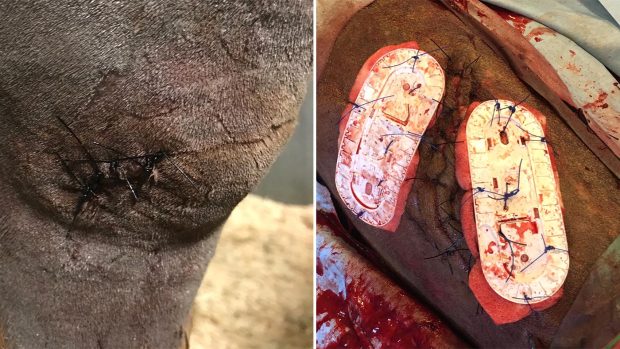Wounds of all sizes located close to joints or tendons should always be treated seriously because ofthe risk of infection. You should call the vet immediately as the sooner treatment begins, the better the prognosis.
Examining the wound
When you find a wound, clip away the surrounding hair and wash it thoroughly before assessing thedamage. What may appear to be a small scratch can be more extensive once “uncovered”. While a puncture wound may appear fairly innocuous, it must be treated as serious because it may introduce infection into the joint itself.
Washing is best done with a gentle hose starting from below the wound and progressing upwards. If you think that a joint or tendon is involved, call your vet immediately. Apply pressure to the wound with a clean, preferably sterile, dressing if there is extensive bleeding.
Exposed joints
Some wounds are so extensive that the joint is visibly exposed. A puncture may be more difficult to assess, although you may see joint fluid oozing from the injury if the joint capsule has been damaged.
Your vet may take a sample of the fluid to test for any infection and to establish which antibiotic to use. X-rays can also provide important information about any additional bony damage.
If the vet thinks there is a chance that the joint has been penetrated, the horse may be referred to the vet college for further examination and to have the wound flushed through under general anaesthetic.
Natural healing
The wound is usually left open to heal naturally by granulation – the growthof blood vessels and connective tissue behind the scab. Prolonged box rest and repeated sterile bandaging will be necessary. The vet may apply a cast if extensive tissue has been loss or extra support is needed.
An antibiotic course should be started as close to the time of injury as possible and may need to be continued for four to six weeks. The vet may also prescribe pain killers, but these must be used intermittently in low doses to avoid masking complications, such as septic arthritis.
If the vet needs to reassess the wound, he may need to take more synovial fluid samples and follow-up X-rays.




